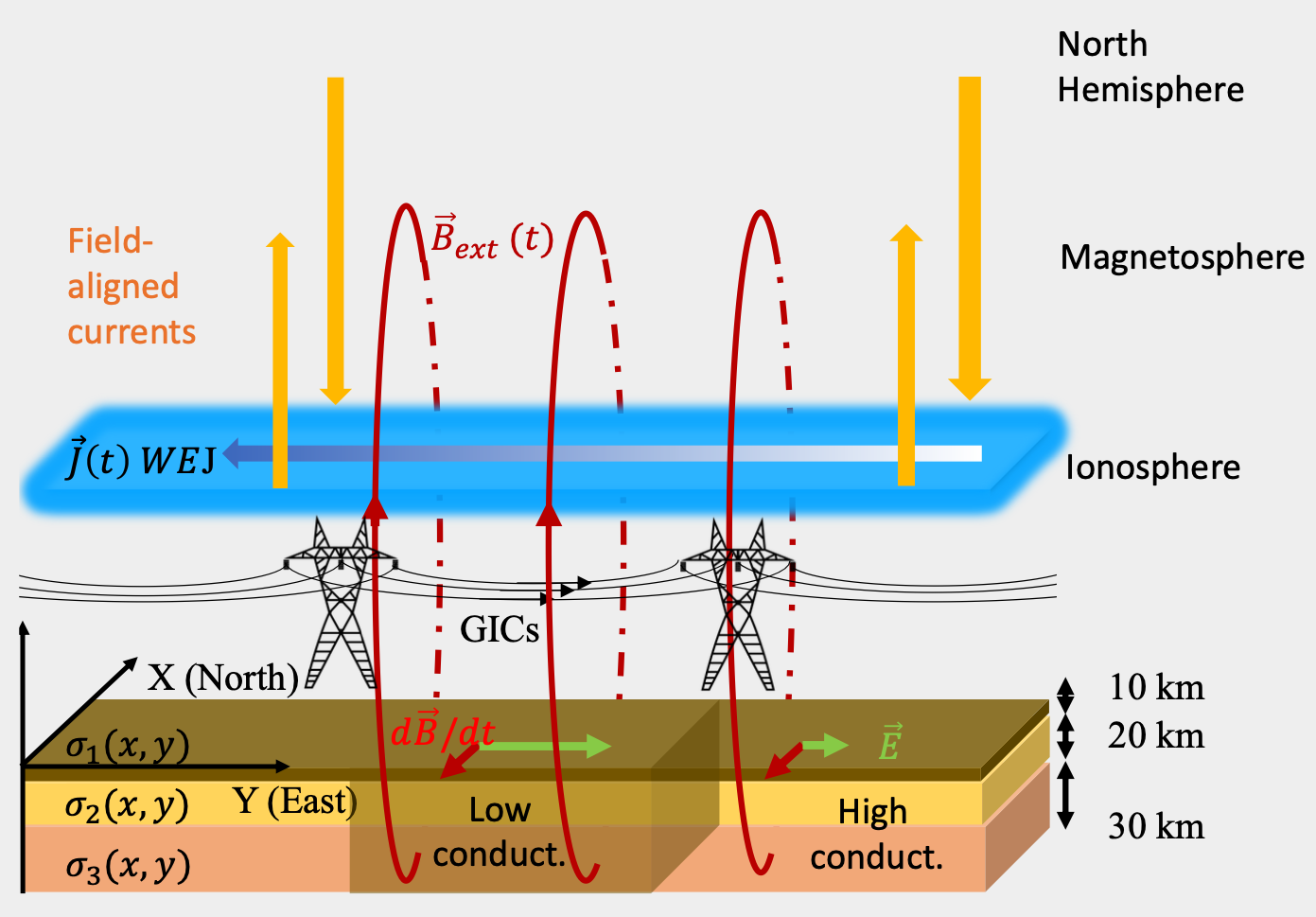Magnetospheric driving of GICs in the Swedish power grid
This is a 4-year PhD project funded by the Swedish Foundation for Strategic Research that studies the driving of Geomagnetically Induced Currents (GICs) in the Swedish power grid.
Solar activity and its subsequent effects on the Earth’s magnetosphere are the primary focus of this research project. The material expelled by solar eruptions is known as interplanetary coronal mass ejections ICMEs, which are large-scale quantities of magnetized plasma that travel outward into the heliosphere. When an ICME encounters the Earth’s magnetosphere, it can cause significant effects, including compression and deformation of the magnetosphere that impact ground-based technology. This project specifically investigates the space weather phenomenon known as GICs, which are unwanted currents that enter large ground-based conductive systems. Examples are pipelines, railways, and bulk power systems. In those cases, GICs can result in increased corrosion, signaling errors, and power supply disruptions, respectively.
GICs are driven by the spatiotemporal variations of the ionospheric currents, which become significantly more dynamic during periods of enhanced space weather. These electrical currents flowing around 100km above the surface cause perturbations of the geomagnetic field at ground level. The combination of a time-varying magnetic field (dB/dt) and the conductive ground and seawater causes induction that sets up a geoelectric field. The geoelectric field directed along a large conductor is what contributes to GICs.

The goals of this project are to determine:
- Are there any transmission lines that are high risk to GICs?
- How solar wind and magnetospheric dynamics drive GICs in the Swedish power grid.
The project is led by Dr. Andrew P. Dimmock at the IRF Uppsala division.
